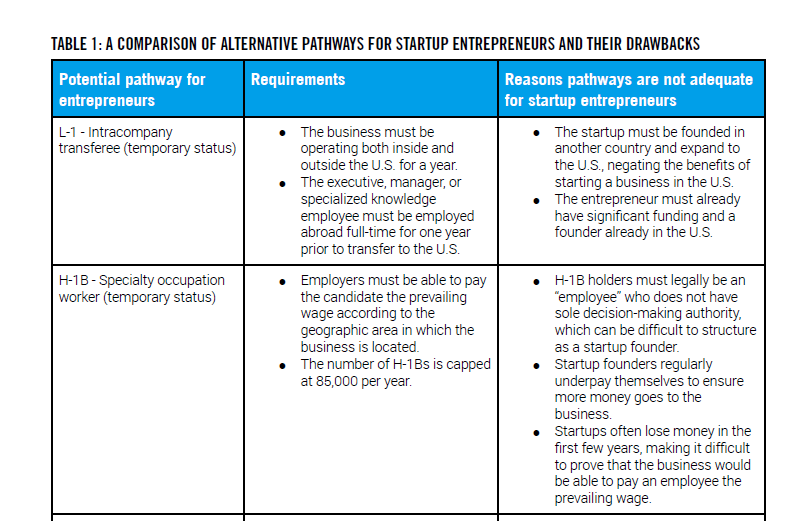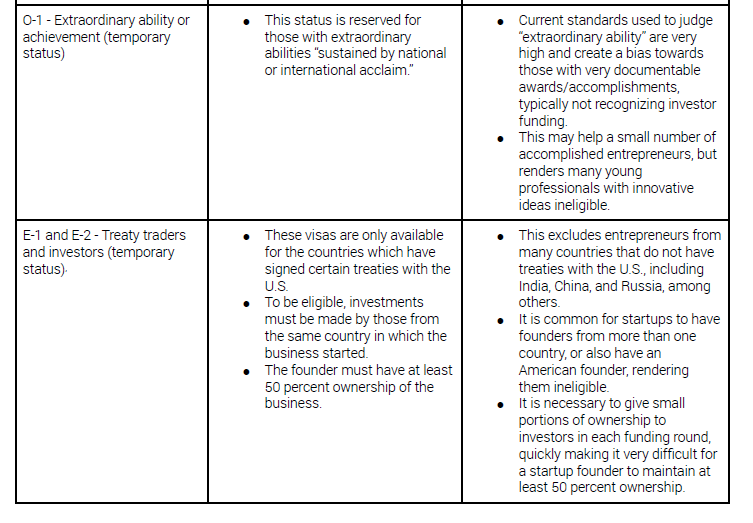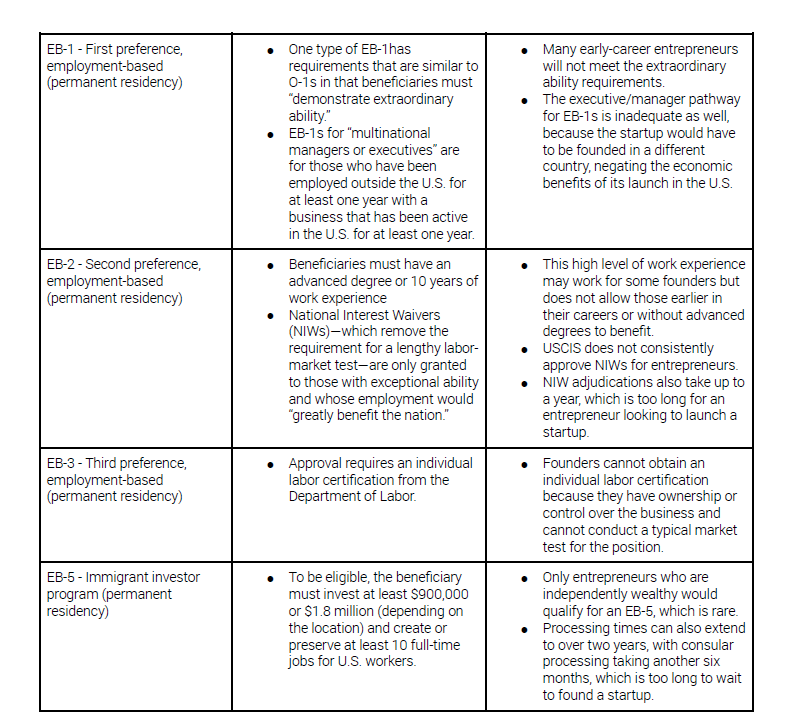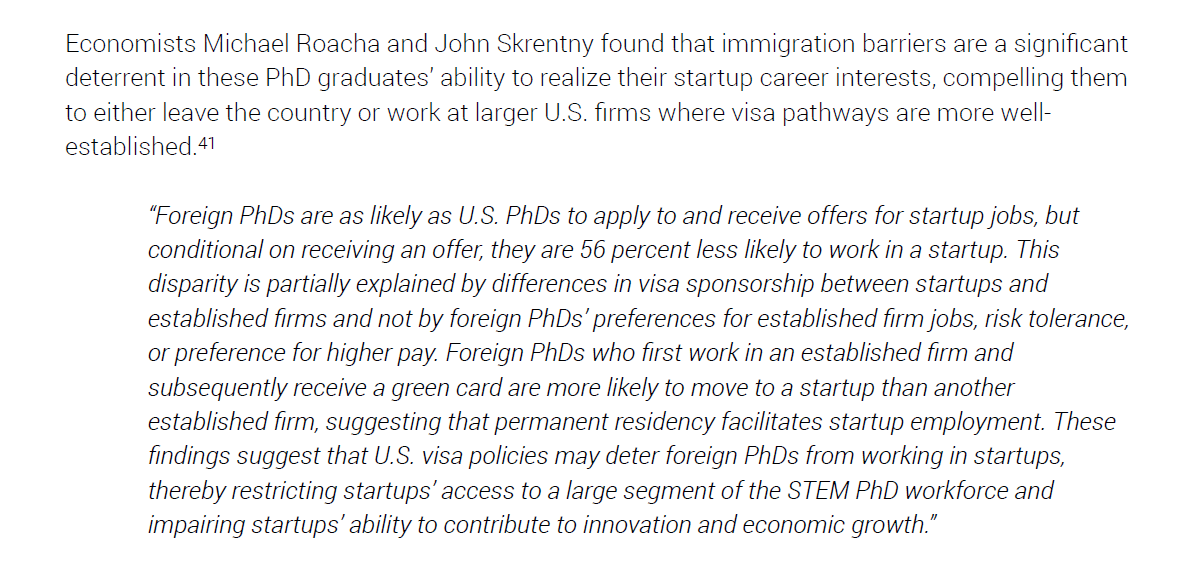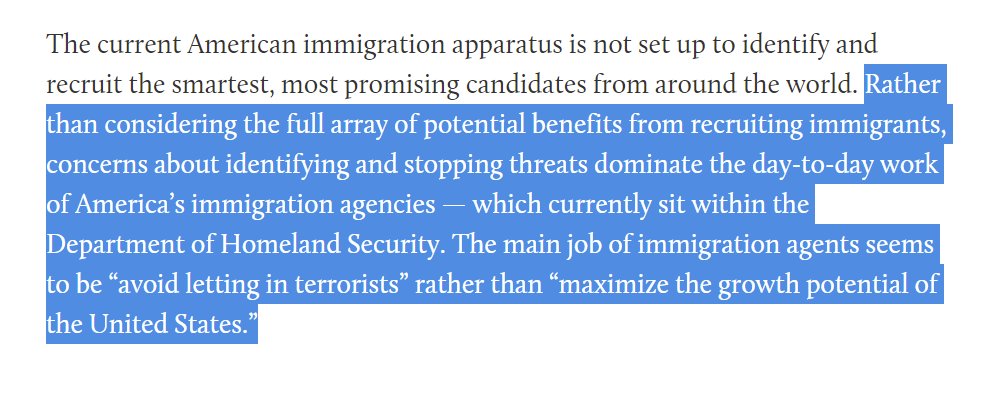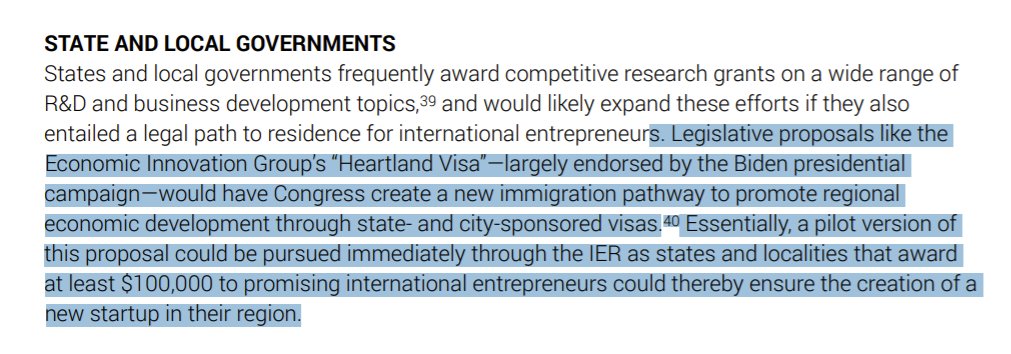New paper out today with @Doug_Rand and @LK_Milliken on the little-known ~International Entrepreneur Rule~.
It’s a dormant Obama-era parole rule that should be renewed immediately to begin letting entrepreneurs from all over the world come to the U.S.
https://www.progressivepolicy.org/publication/long-live-the-international-entrepreneur-rule-an-opportunity-to-boost-jobs-and-economic-growth-is-hiding-in-plain-sight/
It’s a dormant Obama-era parole rule that should be renewed immediately to begin letting entrepreneurs from all over the world come to the U.S.
https://www.progressivepolicy.org/publication/long-live-the-international-entrepreneur-rule-an-opportunity-to-boost-jobs-and-economic-growth-is-hiding-in-plain-sight/
1) Many other countries like Australia, Canada, and the UK have some version of a Startup Visa. The US does not.
And it's actually pretty hard to start a business in the US as an immigrant! None of the other visa pathways quite fit:
And it's actually pretty hard to start a business in the US as an immigrant! None of the other visa pathways quite fit:
2) And we know that foreign-born STEM Ph.D. students are not creating/working for startups at the rate that we'd expect given their stated career interests.
It gives credence to the idea that we have a latent entrepreneurial population that we can "unlock" with better rules.
It gives credence to the idea that we have a latent entrepreneurial population that we can "unlock" with better rules.
3) The third problem is that existing immigration pathways for "high skill" workers rely on a strong demonstration of *prior* success, whereas for most entrepreneurs, their success lies in the future.
4) The IER was designed to address all these gaps, but it came too late in the Obama admin to have much effect, and the Trump admin tried to kill it immediately.
5) But the program still nominally survived, so it can be used effectively immediately and without the need for new legislation or a lengthy notice and comment period.
6) DHS originally estimated the program would draw ~3,000 entrepreneurs a year. That by itself would be significant, but for a variety of reasons explored in the paper, we think it could be far more.
7) But there's also lots of room to improve the program through internal guidance documents and better operating procedures.
At the broadest level, the IER needs the credible backing of the Biden admin, publicly committing to the rule and its improvement based on feedback.
At the broadest level, the IER needs the credible backing of the Biden admin, publicly committing to the rule and its improvement based on feedback.
8) Immigration lawyers play a vital role in guiding their clients through the labyrinthine process of navigating various visa channels and are unlikely to recommend their clients pursue the IER unless they believe that it is a “real” program with a reasonable processing timeline.
9) One cool thing about the program, though, is it uses the skin-in-the-game and knowledge of US investors to judge promising candidates rather than the arbitrary processing judgment of USCIS employees.
This is a consistent problem for our system!
https://www.thenewatlantis.com/publications/the-egghead-gap
This is a consistent problem for our system!
https://www.thenewatlantis.com/publications/the-egghead-gap
10) All you need for entry is 250k investment from private US investors or 100k from federal/state/local government and you are in.
But that means there is a vested U.S. party to help them succeed and make a good life here.
But that means there is a vested U.S. party to help them succeed and make a good life here.
11) Based on this latter qualification, there are some interesting pilot programs you could run... I really like the @ModeledBehavior et al. suggestion for a Heartland Visa, and you could run a very basic/scaled-down version of it through the IER.
12) In summary, the IER is a useful tool for boosting U.S. dynamism and job creation.
We can, and should, pursue longer-term legislative solutions to alleviate the green card cap and create more certainty. But it's really hard to pass legislation, and this is low-hanging fruit.
We can, and should, pursue longer-term legislative solutions to alleviate the green card cap and create more certainty. But it's really hard to pass legislation, and this is low-hanging fruit.

 Read on Twitter
Read on Twitter
